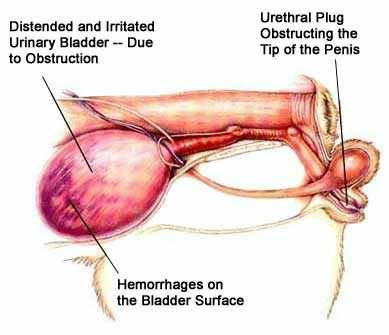How to cure urolithiasis and nephritis (part 1)
Today it became obvious and clear that the curing factors we have to take into account are not only connected with proper and methodical application of natural medicines which only strengthen and rejuvenate the body, but also effectively treated methods and folk remedies helping to overcome even the most severe diseases.
The Urolithiasis of kidneys which are also known as nephrolithiasis or urolithiasis, according to traditional medicine are more often described as a disease associated with the formation of kidney stones and / or other organs of the entire urinary system. The Urolithiasis is a kind of disease which affects all population groups from all ages i.e. from infants to the elderly. However, the type of urinary stone usually depends upon the age of the patient and it may differ significantly. Hence, among older people in terms of age we easily notice predominate uric acid kind of stones. At the same time a kind of Protein stones are formed much less frequently amongst such group of people. If we consider a middle aged group it should be noted that more than 60% of stones happening are a mixed composition. The stones can be formed inside the kidneys, in ureter or bladder having a size of 15 cm. and weigh up to several kilograms. Small stones are more often called as sand in the kidneys.
The causes of urolithiasis
Well, the main reason for the formation of kidney stones is usually a metabolic disease occurring and leading to particularly changes in water-salt and chemical composition of blood. However urolithiasis will not develop without the presence of predisposing factors such as:
- hereditary predisposition;
- chronic diseases of the gastrointestinal tract i.e. gastritis or colitis, or in some cases peptic ulcer disease, etc. as well as urogenital system like pyelonephriti or prostatitis which is also known as prostate adenoma;
- violations with respect to functions of the parathyroid glands;
- bone diseases like osteomyelitis and osteoporosis or injuries;
- prolonged dehydration occurring as a result of poisoning or infectious disease;
- due to lack of vitamins in the body, especially concerning the group D;
- constant consumption in huge quantities the products that increase the acidity of urine like spicy, sour, salty ones;
- use of hard water with high salt content;
- the geographical and ecological factors (People living in hot climates have the likelihood of urolithiasis to progress more often.);
- permanent lack of ultraviolet rays.
Where do the stones form?
Stones can form in any department of your urinary system. In fact, in most cases stones are formed in the kidneys and ureters and bladder.

Symptoms of nephrolithiasis
Normally, nephrolithiasis does not remain unnoticed by patients due to it’s effects towards their organisms. However, in some cases, the disease can be secretive, and found during the study of the organism to the suspicion of other diseases.
You experience dull and exhausting pain on one side like a kind of duplex which increases during exercise or simply a change in body position. This is perceived as the one of the most typical symptoms of the presence of stones in the organs of the urinary system. When a kidney stone enters the ureter it is followed by the pain which is felt in the lower abdomen or groin and genitals. After a severe attack of pain caused by stones it may be followed by unpleasant feeling along with the urine.
The symptom is in the form of acute pain in the lumbar region. The elements of such colic can last several days usually stopping when the stone moves or goes out of the ureter.
Such kind of pain is an indication that the stones are being at present in the bladder or ureter channel. During urination urine stream may be interrupted, although the patient feels that the bladder is not empty. This is a so-called syndrome of “lay” where urination continues if you change the position of the body.
Blood in the urine may occur after severe pain or after physical exertion.
(that is straight forward)
Posted in Genitals and Urine